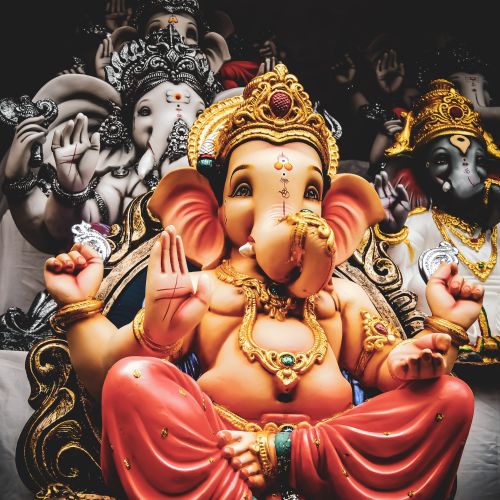The Fashion in Festival Season For Embracing Tradition and Style
India’s festival season is not just a time of religious observance and cultural festivities but also a vibrant showcase of traditional attire infused with modern flair. From the sparkling lights of Diwali to the riotous colors of Holi, each festival brings with it an opportunity to adorn oneself in exquisite garments that reflect the rich cultural heritage of the country. Let’s explore how fashion intertwines with the celebration of festivals in India, creating a tapestry of elegance, tradition, and style.
Diwali: Dazzling in Ethnic Elegance
Diwali, the Festival of Lights, is synonymous with opulence and splendor. Homes are illuminated with diyas and rangolis, and families gather to exchange sweets and gifts. It’s a time when traditional attire takes center stage, with women draping themselves in richly embroidered sarees or lehengas adorned with intricate zari work and embellishments. The color palette ranges from vibrant reds and golds to deep blues and emeralds, symbolizing prosperity and auspiciousness.

Men complement the festivities in kurtas paired with pajamas or dhotis, often opting for silk or brocade fabrics that exude regal charm. Accessories like elaborate necklaces, earrings, and ornate footwear complete the ensemble, adding a touch of refinement to the celebratory attire.
Navratri: Dance to the Rhythm of Tradition

Navratri, a nine-night festival dedicated to Goddess Durga, is celebrated with fervor across India, particularly in Gujarat and West Bengal. It’s a time for vibrant dance performances like Garba and Dandiya Raas, where women dazzle in colorful chaniya cholis adorned with mirror work, embroidery, and bandhani prints. Men participate in the revelry wearing embroidered kurtas and kediyus paired with colorful turbans or dupattas.
The festival attire is characterized by bright hues such as yellow, red, green, and orange, reflecting the joyous spirit of Navratri. Traditional jewelry like oxidized silver necklaces, jhumkas (earrings), and bangles add a traditional touch, while comfortable footwear ensures dancers can move gracefully throughout the night.
Holi: Playful Fusion of Colors
Holi, the Festival of Colors, heralds the arrival of spring with playful exuberance. Participants wear simple yet vibrant white clothing that serves as a canvas for the rainbow of colors thrown during the festivities. As water balloons burst and colored powders fill the air, everyone revels in the joyous chaos, celebrating the triumph of good over evil and the arrival of a new season.

While traditional attire takes a backseat during Holi, many choose to wear lightweight, easy-to-dry garments to ensure comfort during the festivities. Some opt for fusion wear like colorful kurtas paired with jeans or leggings, combining traditional elements with modern styles. Sunglasses and hats offer protection from the sun, while water-resistant footwear ensures mobility in the wet and slippery conditions.
Eid: Elegance in Islamic Tradition

Eid-ul-Fitr and Eid-ul-Adha are important Islamic festivals celebrated with prayers, feasts, and social gatherings. Traditional attire plays a significant role during Eid, with women donning beautifully embellished salwar kameez or anarkalis in vibrant colors like royal blue, magenta, and gold. Intricate embroidery, sequins, and zari work add a touch of glamour to the attire, complemented by matching dupattas and delicate jewelry.
Men dress in immaculate white kurta-pajamas or sherwanis, often accessorized with embroidered caps (topis) and traditional footwear like mojris. Perfumes (attars) are applied as a sign of luxury and elegance, enhancing the festive ambiance during Eid celebrations.
Durga Puja: Glamour and Tradition in Bengal
Durga Puja, primarily celebrated in West Bengal, is a grand festival honoring Goddess Durga and her victory over the demon Mahishasura. It’s a time when the streets of Kolkata and other Bengali towns come alive with magnificent pandals (temporary structures) housing elaborately crafted idols of the goddess.
Fashion during Durga Puja blends tradition with contemporary
trends. Women adorn themselves in exquisite silk sarees, often featuring
intricate motifs like kantha stitch or jamdani weaving, paired with beautifully
embellished blouses. The colors range from traditional red and white to vibrant
hues of purple, green, and blue, reflecting the festive spirit.

Men opt for dhoti-kurtas or kurta-pajamas, sometimes accessorized with traditional Bengali topis (caps) and juti (leather sandals). The attire is completed with traditional jewelry such as gold necklaces, bangles, and earrings, enhancing the cultural significance of the festival.
Ganesh Chaturthi: Maharashtrian Extravaganza

Ganesh Chaturthi, celebrated with great fervor in Maharashtra and other parts of India, marks the birth of Lord Ganesha. The festival spans ten days, during which intricately crafted idols of Lord Ganesha are installed in homes and public pandals.
Maharashtrian attire during Ganesh Chaturthi reflects the state’s rich cultural heritage. Women wear nauvari sarees, a traditional nine-yard saree draped in a unique style, adorned with gold borders and paired with traditional jewelry such as kolhapuri saaj (necklace), nath (nose ring), and bangles. Men opt for dhoti-kurtas or kurta-pajamas, often in vibrant colors like saffron or green, accompanied by a pheta (traditional turban).
The festivities include cultural performances like Lavani dance and bhajans (devotional songs) dedicated to Lord Ganesha, creating a lively atmosphere filled with devotion and joy.
Rath Yatra: Pomp and Splendor in Odisha
Rath Yatra, celebrated primarily in Puri, Odisha, is a grand procession dedicated to Lord Jagannath and his siblings, Balabhadra and Subhadra. The highlight of Rath Yatra is the pulling of elaborately decorated chariots (raths) carrying the deities through the streets amidst thousands of devotees.
Fashion during Rath Yatra combines traditional Odia attire with elements of grandeur. Women wear traditional silk sarees like Sambalpuri or Bomkai sarees, known for their intricate ikat designs and vibrant colors. They accessorize with traditional jewelry such as filigree earrings, silver necklaces, and bracelets.

Men dress in dhoti-kurta or kurta-pajama, often in shades of white or off-white, reflecting simplicity and purity. The attire is completed with traditional Odia footwear like khadau (wooden sandals) or mojris.
Conclusion: A Fusion of Festivity and Fashion
Celebrating the festival season in India with fashion is not just about wearing clothes; it’s about embodying cultural traditions, expressing creativity, and embracing the spirit of joy and togetherness. Each festival offers a unique opportunity to showcase traditional attire that honors the rituals and values cherished by generations.
